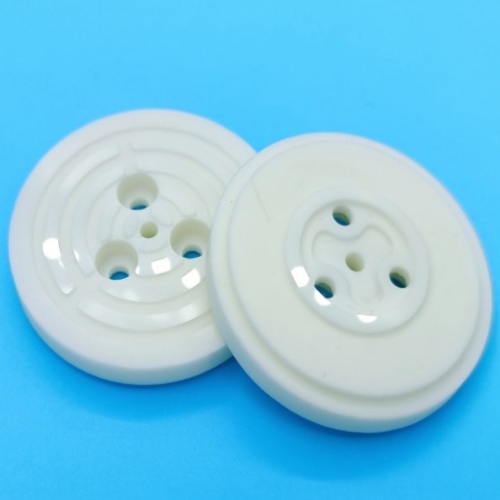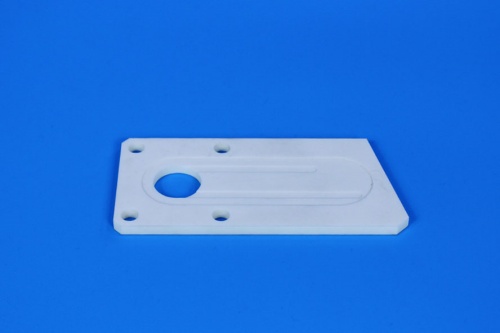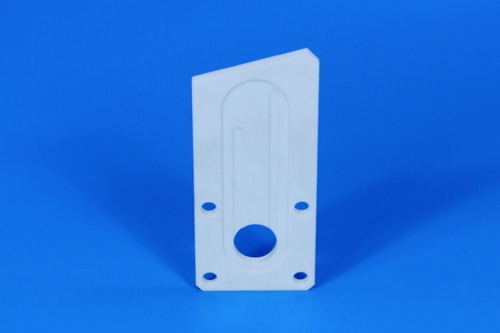What is a photovoltaic ceramic suction cup
Photovoltaic ceramic chuck is a kind of vacuum chuck made of ceramic material, which is widely used in the production and manufacturing process of photovoltaic industry. It is usually made of porous ceramic material, which has the characteristics of uniform pore size distribution, internal communication, smooth and delicate surface, and good flatness. This kind of chuck fixes the workpiece through the principle of vacuum adsorption, which can provide stable and reliable adsorption and fixing functions for the production of photovoltaic modules.

Working principle
The working principle of the photovoltaic ceramic suction cup is based on vacuum adsorption. Its core component is a porous ceramic plate, which is assembled in the counterbore of the base, and the periphery is bonded and sealed with the base. When the vacuum system starts-up, the air is pumped out through the micropores of the ceramic plate, forming a negative pressure, so that the workpiece is firmly adsorbed on the surface of the suction cup. Since the microporous structure of the ceramic material is very small and uniform, the workpiece will not cause surface scratches and depressions due to negative pressure during the adsorption process.
Material properties
Photovoltaic ceramic chucks are usually made of high-performance ceramic materials such as alumina, zirconia, or silicon carbide. These materials have the following significant properties:
- High hardness and wear resistance: Ceramic materials have high hardness and can withstand long-term use without easy wear.
- High temperature resistance: Ceramic materials can maintain stable performance in high-temperature environments and are suitable for high-temperature processes in photovoltaic production.
- Chemical stability: Ceramic materials have good chemical stability, are not easily corroded, and are suitable for contact with various chemical substances.
- Insulation: Ceramic materials have high insulation, which can eliminate static electricity and avoid damage to the workpiece.

Application field
Photovoltaic ceramic chucks play an important role in multiple aspects of the photovoltaic industry, including but not limited to the following:
- Wafer processing: During the cutting, grinding, cleaning, and testing of silicon wafers, ceramic chucks can stably adsorb silicon wafers to prevent them from moving or being damaged during processing.
- Film preparation: In the transfer, pressing, and laser welding of photovoltaic films, ceramic chucks can provide uniform adsorption force to ensure the flatness and processing accuracy of the films.
- Automated loading and unloading: In the production line of photovoltaic modules, ceramic chucks can be used for the loading and unloading operation of automated manipulators, improving production efficiency and reducing the rate of fragmentation.

Advantages and features
Compared with traditional metal chucks, photovoltaic ceramic chucks offer the following significant advantages:
- Uniform adsorption force: The microporous structure of the ceramic chuck can provide uniform adsorption force, avoiding local uneven force on the workpiece during the adsorption process.
- Anti-static function: The insulation of ceramic materials can effectively prevent the impact of static electricity on the workpiece.
- Long service life: The wear resistance and chemical stability of ceramic materials give them a long service life.
- Easy to clean and maintain: Ceramic suction cups are not easy to absorb dust and debris, making cleaning convenient.
As a high-performance industrial equipment, photovoltaic ceramic chucks play an indispensable role in the production and manufacturing of the photovoltaic industry due to their unique advantages and wide applicability.
CATEGORIES
LATEST NEWS
- What are the functions and ...
- What are the properties of ...
- What are the characteristic...
- What are the applications o...
- What are the uses of silico...
- What are the uses of zircon...
- What are the advantages and...
- What are the advantages of ...
- What are the difficulties i...
- What are the advantages of ...
